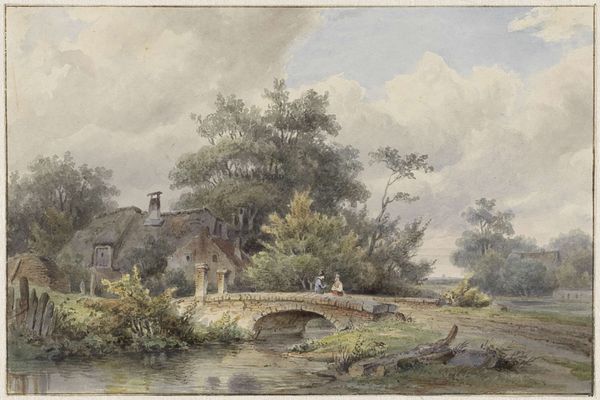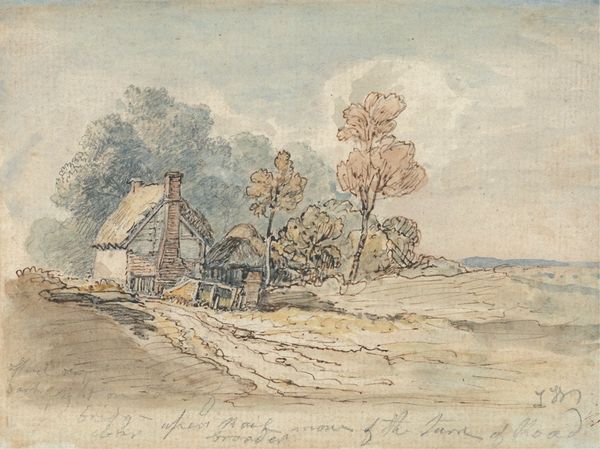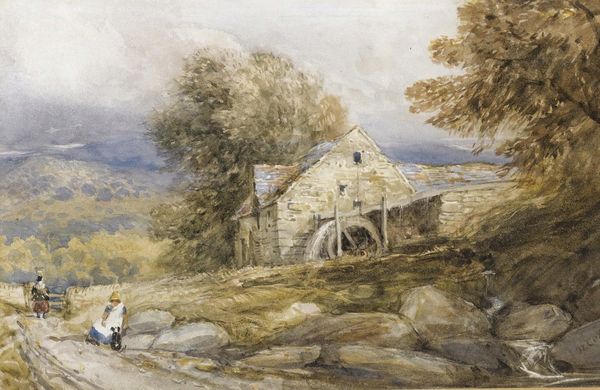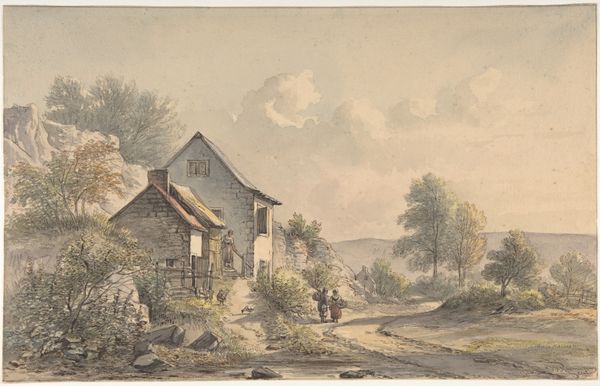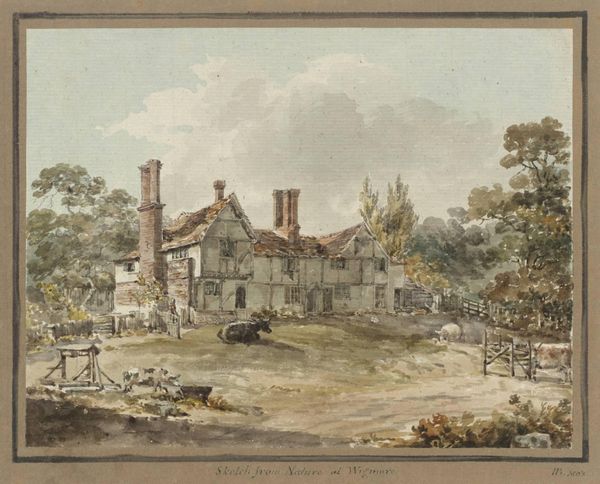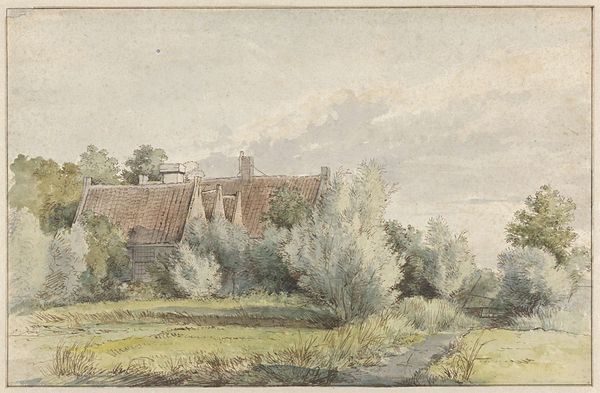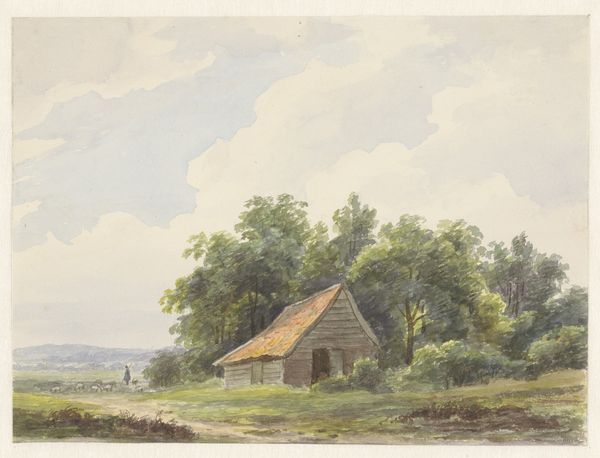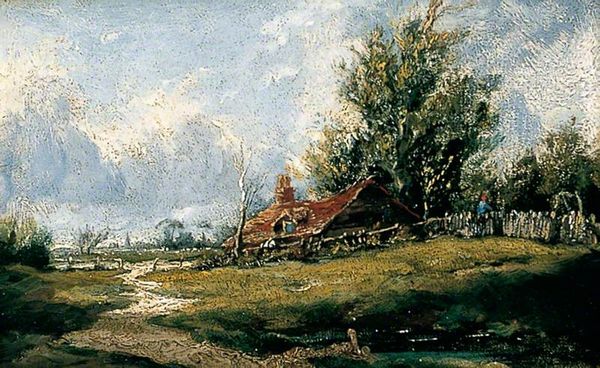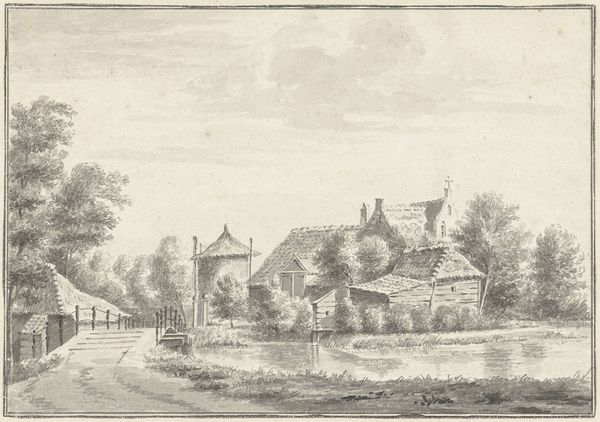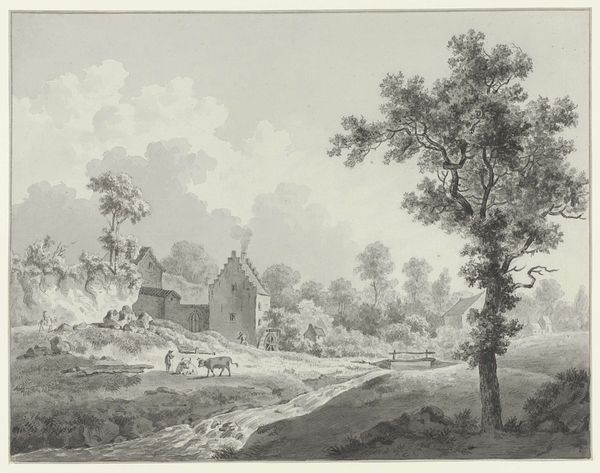
painting, watercolor
#
painting
#
landscape
#
watercolor
#
romanticism
Copyright: Public Domain: Artvee
This watercolour landscape was painted by Joseph Mallord William Turner. Notice the watermill, a once-vital structure that harnesses the brook’s energy, driving its great wheel round and round. This watermill is not merely a building, but a potent symbol deeply embedded in our collective memory. The motif of the mill is as old as time itself, think of medieval tapestries or 17th century Dutch paintings. The waterwheel’s circular motion might echo the cyclical nature of life, death, and rebirth. Its constant turning suggests the ceaseless flow of time and fate. The rhythmic motion could also be a powerful metaphor for human industry, and our never-ending effort to control nature. Water, so vital for life, is being tamed and used for productivity. The emotional resonance of this scene stirs something profound within us, tapping into our shared heritage. Just as the wheel turns, so too does history, bringing old symbols into new light.
Comments
rijksmuseum about 2 years ago
⋮
With his grand visionary landscapes, William Turner would become one of the most important artists of the 19th century. The seed of this development is already contained in this early watercolour. By eliminating clear contours, Turner created a great sense of unity in the scene. He scraped off areas of pigment in places, as a result of which the water of the brook seems to be in constant motion.
Join the conversation
Join millions of artists and users on Artera today and experience the ultimate creative platform.
